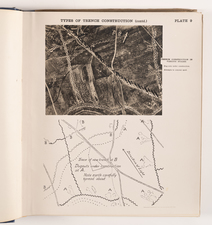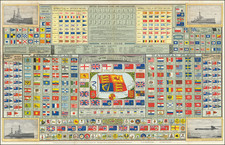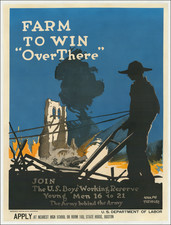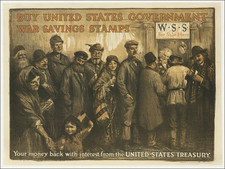Issued during World War I, this American propaganda poster titled "The Hun—His Mark" is a poignant artifact advocating for the purchase of Liberty Bonds. It features a stark red handprint symbolizing German aggression and calls for its erasure through financial support for the American war effort.
During World War I, the United States government faced the monumental task of financing military operations, which included tanks, planes, and munitions. To meet these expenses, the government issued Liberty Bonds to the American public, leveraging patriotism to fund the war. This poster, created in 1917 by the esteemed illustrator James Allen St. John, encapsulates the fervent anti-German sentiment prevalent in America at the time. It was one of the earliest and most visceral visual representations referring to German forces as "Huns," a term loaded with implications of barbarity and relentless aggression.
St. John, primarily known for his later work in fantasy illustration, applied his artistry to the war effort with a design that was both simple and emotionally compelling. The use of a bloody handprint as the central image was a powerful metaphor for the perceived brutality of German actions during the war. The caption "Blot it Out with Liberty Bonds" directly connects the viewer's financial contribution to a moral and patriotic duty to counteract this aggression.
This poster is an exemplary piece of wartime propaganda that not only encouraged financial contributions but also played a significant role in shaping public perceptions of the enemy. By framing the conflict in stark moral terms and visually representing the enemy as inherently violent, it galvanized a sense of urgency and moral duty among Americans. The phrase "The Hun—His Mark" and the accompanying graphic were designed to instill a deep-seated antipathy towards the Germans, effectively rallying public support for the war effort.












![[ First World War) ] The World Cannot Live Half Slave, Half Free -- The Prussian Blot -- 100,000,000 People Already Enslaved By Germany](https://storage.googleapis.com/raremaps/img/small/68731.jpg)



![(First World War - German Propaganda) Die Eisenbahn, der Lebensnerv des Heeres. [The railway, the lifeblood of the army.]](https://storage.googleapis.com/raremaps/img/small/89362.jpg)